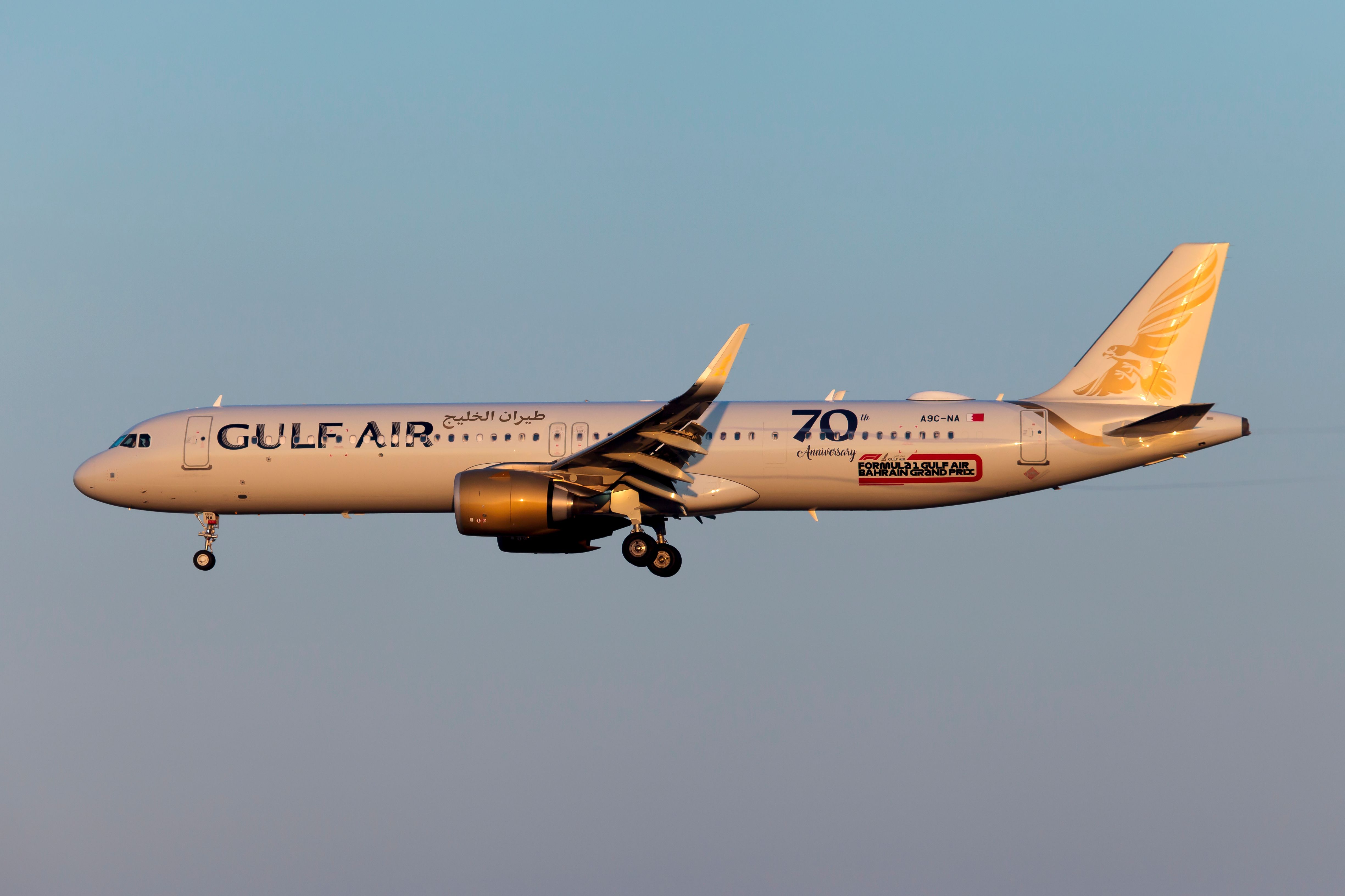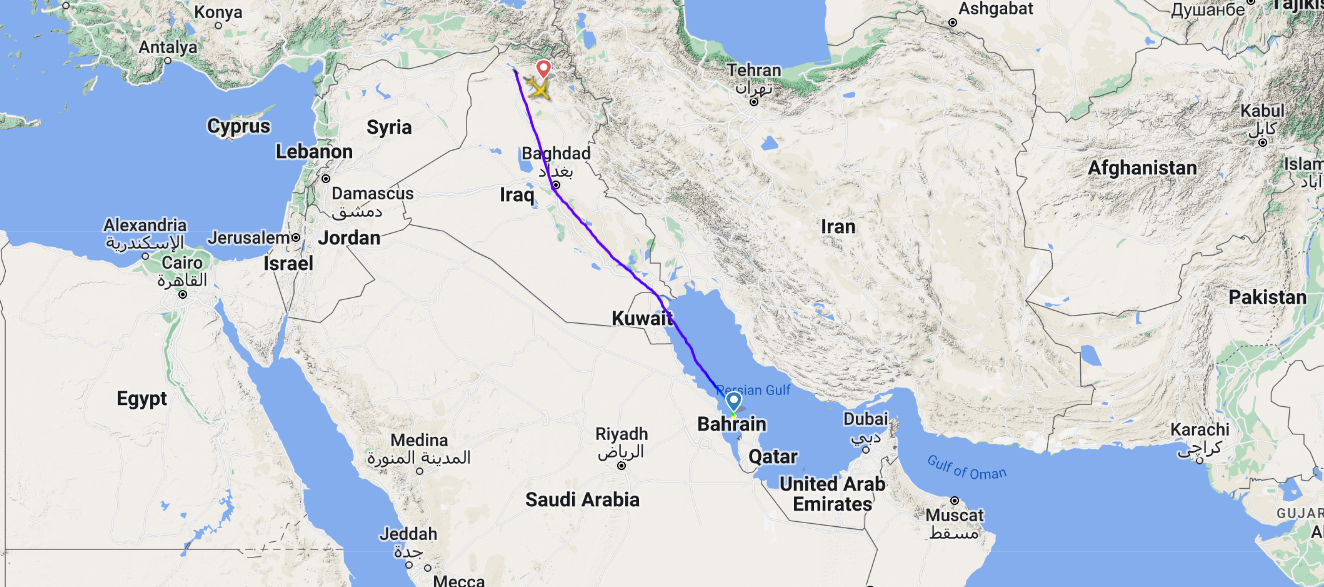On Tuesday, November 22nd, a Gulf Air Airbus A321 made an emergency diversion in flight after a crew member suffered a heart attack. The flight was scheduled to fly from Bahrain International Airport (BAH) to Paris Charles de Gaulle Airport (CDG). After the crew member was taken ill, the flight made an emergency diversion to Iraq's Erbil International Airport (EBL), where the crew member was rushed to the local hospital. Unfortunately, the crew member was declared dead by Erbil's medical services shortly afterward.
Diverted flight
Flight GF19 to CDG departed BAH at approximately 22:22 UTC on November 21st. Roughly two hours later, around 00:27 UTC, the airplane turned sharply to the southeast towards EBL. At this point, the aircraft was just south of the crossroads connecting Iraq, Syria, and Turkey. The airliner landed safely on runway 36 at EBL, and no other injuries were reported. After the crew member was taken by local medical personnel, the airplane departed to finish its route.
The flight departed EBL at 03:37 UTC and landed at CDG at 09:05 UTC. The aircraft has since flown back to Bahrain and returned to Paris as it has been scheduled to continue operating flight GF19 until tomorrow, November 24th, when it will be assigned to a new route. The airline has expressed its sympathies to the crew member's family. The company released a statement concerning the tragic event, which reads,
"The national carrier expresses its deepest condolences to the crew member's family and loved ones and confirms that the flight resumed to Paris as scheduled. Gulf Air reassures that the safety of its passengers and crew comes at the top of its priorities, and thanks the affected flight's passengers for their patience and understanding,"
Get the latest aviation news straight to your inbox: Sign up for our newsletters today.
Medical emergencies
Flight crews are trained to handle various medical emergencies that could occur aboard an aircraft. In this situation, the flight crew took appropriate action and diverted to the nearest suitable airport with emergency medical services. This is standard procedure to get any injured person to the appropriate medical services as quickly as possible. While cabin crews have CPR and First Air training, this doesn't compare to the resources that can be accessed on the ground.
Flight crews divert to closer alternate airports whenever there is a potential emergency. Earlier this month, a Delta Air Lines Boeing 757 diverted to Albuquerque International Sunport (ABQ) after smoke was noticed in the cabin. The flight had departed Hartsfield-Jackson Atlanta International Airport (ATL) and was beginning a gradual descent as it approached Los Angeles International Airport (LAX) when smoke began to fill the cabin.
The flight crew responded to this hazard appropriately by diverting to the nearest suitable airport where passengers and crew could be deplaned. The flight landed safely, and no injuries were reported. In this situation, the smoke posed a potential threat to those aboard the aircraft as it was a sign of a mechanical or electrical system failure. It could have also led to a medical emergency, as many medical problems may occur from smoke inhalation.
Source: Aerotime Hub, FlightRadar24


